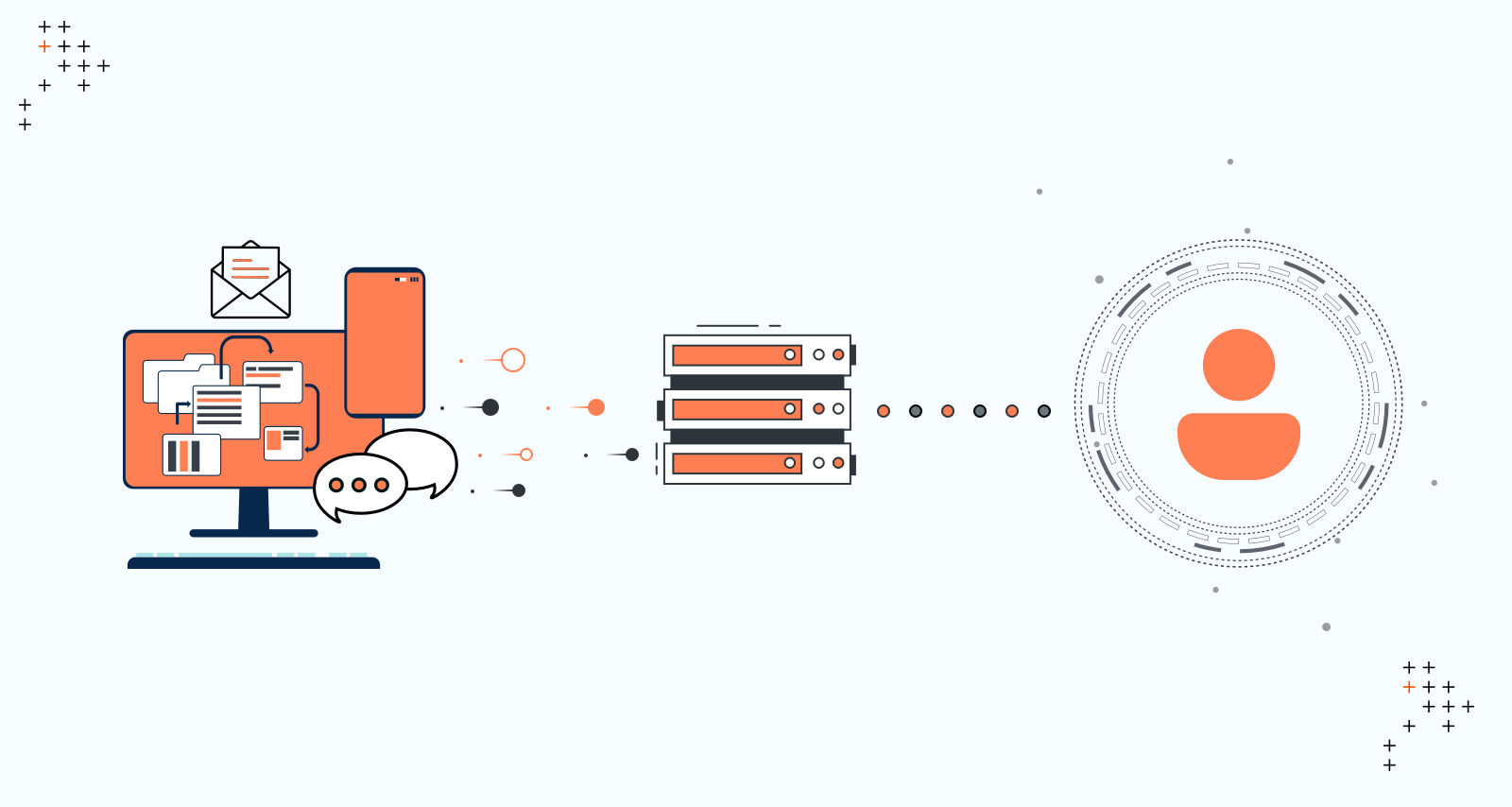Data plays a pivotal role in shaping customer interactions, so implementing a CDP can empower businesses to unify and analyze customer data from various sources. This can lead to more personalized and effective marketing strategies, improved customer segmentation, and enhanced digital experiences.
However, diving into CDP implementation without proper assessment can lead to challenges such as underutilization of the platform, data management issues, and inadequate return on investment. To avoid these challenges, organizations must comprehensively evaluate their readiness across various dimensions before embarking on a CDP implementation journey.
Evaluating Readiness For CDP Implementation
Before implementing a Customer Data Platform (CDP), organizations must establish several prerequisites to ensure a successful integration and utilization of the platform.
- Ensure a clear data strategy, outlining objectives, sources, and governance frameworks aligned with broader business goals.
- Ensure good data quality through cleansing and validation for accurate insights and decision-making.
- Assess and enhance the technology infrastructure required to support a CDP integration.
- Foster cross-functional collaboration, secure stakeholder buy-in, allocate resources, and develop a comprehensive change management plan.
Once these prerequisites are in place, the next step is to conduct a thorough evaluation across different dimensions.
Do You Need A CDP
Assess your organization across the following dimensions to evaluate the need for a CDP.
1. Data Maturity & Infrastructure
Assess your organization's data management capabilities and infrastructure readiness for CDP integration.
- Current Data Sources
Identify existing data sources and evaluate their formats, accessibility, and captured data.
- Integration Capability
Assess the ability to integrate data sources with a CDP, considering API availability and compatibility.
- Data Quality & Consistency
Ensure data accuracy, reliability, and adherence to governance and compliance standards.
Organizations with scattered data across various platforms and systems who wish to enable better decision-making should consider implementing a CDP. On the other hand, organizations with limited data sources do not need a CDP and should consider a different solution depending on their goal.
2. Organizational Readiness
Evaluate your organization's readiness beyond technology.
- Stakeholder Alignment
Ensure key stakeholders understand and support the CDP initiative.
- Skillset Availability
Assess if your team has the necessary skills for CDP implementation or if training/new hires are needed.
- Technology Stack Compatibility
Evaluate compatibility with existing technology and potential upgrades.
Organizations where multiple stakeholders across departments need access to unified customer data for decision-making should consider opting for a CDP. On the other hand, organizations with a unified vision for utilizing existing data sources and access to the right technology infrastructure for supporting data integration can do without a CDP.
3. Future Scalability
Consider the scalability of your CDP implementation.
- Scalability Assessment
Evaluate scalability to accommodate future business growth.
- Flexible Architecture
Ensure the CDP architecture can adapt to evolving data sources and business needs.
Implementing a CDP is a great idea for organizations anticipating significant customer data volume and complexity growth. It is also ideal for organizations anticipating the adoption of new technology and data sources in the future.
Businesses anticipating minimal growth in customer data volume and with a stable industry can look into other avenues for building better customer experiences.
4. Change Management
Address organizational changes associated with CDP implementation.
- Culture Of Data-Driven Decision Making
Foster an environment where decisions are based on data insights.
- Process Integration
Ensure seamless integration with existing processes to make data insights actionable.
- Change Management Strategies
Implement strategies to manage organizational transitions smoothly.
Organizations transitioning to a data-driven culture with the necessary stakeholder approvals, training, and support are usually in a great position to implement a CDP. Organizations with this culture or those not looking to change their current processes and systems should refrain from implementing a CDP.
5. Resource Availability
Ensure the availability of resources for successful CDP implementation.
- Technical Expertise
Assess the need for skilled data management, integration, and analysis personnel.
- Infrastructure
Ensure adequate technological infrastructure to support CDP requirements.
- Budget
Allocate the budget for initial implementation, maintenance, and updates.
Implementing and managing a CDP requires specialized skills and expertise. Organizations with this expertise or are willing to invest in it should consider implementing a CDP.
6. Data Democratization
Promote accessibility and understanding of data across the organization.
- User-Friendly Tools
Implement tools for easy data access and interpretation.
- Data Governance
Establish clear policies on data access, usage, and security.
- Training & Literacy
Provide training to improve data literacy across the organization.
Organizations looking to unify customer data for decision-making should consider implementing a CDP.
7. Technology Compatibility & Integration
Ensure seamless integration with existing technology platforms.
- Existing Tech Stack Assessment
Evaluate compatibility with current systems.
- API & Data Exchange Capabilities
Ensure seamless data exchange with other systems.
Organizations looking to change their existing technology platforms that operate in silos and hinder data exchange and integration should consider opting for a CDP. Businesses with existing technology platforms that operate cohesively allow seamless data exchange and integration without needing a specialized platform like a CDP.
8. Use Case Definition & Business Goals
Align CDP implementation with business objectives.
- Clear Use Cases
Identify specific use cases for the CDP.
- Alignment with Business Objectives
Ensure CDP directly contributes to achieving key business goals.
Implementing a CDP is a good idea when businesses require advanced data analysis capabilities, such as personalized marketing or real-time analytics, that cannot be achieved using existing tools. It can also help segment customers based on specific criteria and personalize marketing strategies.
9. Compliance & Data Governance
Ensure compliance with data privacy regulations and robust governance.
- Data Privacy & Security
Confirm compliance with data protection regulations.
- Audit & Reporting Requirements
Support necessary audit trails and reporting for compliance.
Organizations operating in highly regulated industries or globally must comply with necessary data governance and compliance regulations such as GDPR and CCPA.
10. Budget & ROI Consideration
Evaluate the financial aspects of CDP implementation.
- Cost-Benefit Analysis
Understand the total cost of ownership and expected ROI.
- Long-Term Financial Commitment
Consider long-term maintenance and scaling costs.
Implementing a CDP is beneficial when the potential benefits, such as improved customer engagement, increased sales, and enhanced marketing effectiveness, outweigh the initial investment and ongoing costs.
11. Vendor Evaluation
Select a suitable CDP vendor.
- Market Research
Conduct thorough research on potential CDP vendors.
- Proof Of Concept
Consider running a pilot program to test effectiveness.
Customer support and assistance are crucial for successful CDP implementation and ongoing maintenance. Ensure a thorough vendor evaluation when choosing a reputable and reliable CDP vendor.
12. Scalability & Future-Proofing
Ensure CDP scalability and adaptability.
- Scalability Assessment
Ensure CDP can scale with business growth.
- Adaptability To Future Trends
Ensure CDP can adapt to future data trends and technological advancements.
A scalable CDP solution is necessary when businesses anticipate significant data volume and complexity growth. A CDP can help adapt to future data trends and technological advancements.
Submit The Form To Get Personalized CDP Recommendations
Assessing readiness across these areas ensures successful CDP implementation and effective utilization in driving business growth and enhancing customer experiences. You can also submit this form to determine if you need a CDP or speak to our experts about your business requirements and goals.

Abhishek Dhariwal, Senior DXP Consultant
Abhishek is a true explorer—whether it’s different cuisines, places, or subjects, he enjoys it all. He reads at least two newspapers daily, values attention to detail, and prioritizes thoughtful solutions over quick fixes. Away from work, you can find this technophile enjoying TV Series.

Simran Sethi, Marketing Associate
Simran is an avid reader. She is an active runner, who also likes to swim, dance, and sing. For her, the meaning of life lies in the little things. Kindness, passion, and compassion are her life’s essential values.

 We respect your privacy. Your information is safe.
We respect your privacy. Your information is safe.



Leave us a comment